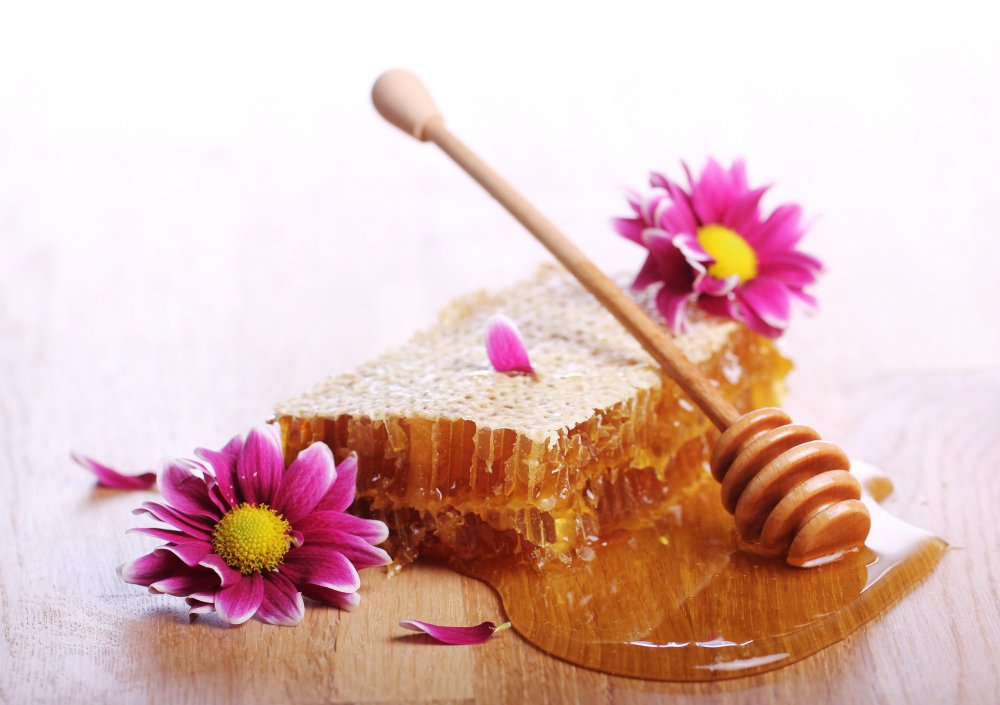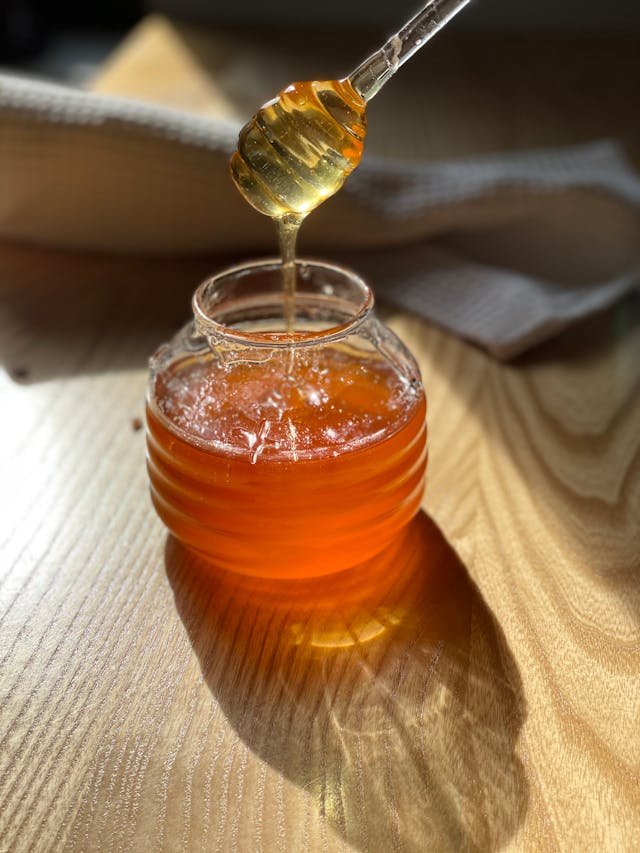Fireweed honey has a delicate flavor and many health benefits. It is called the “Champagne of Honeys.” This premium honey is from fireweed plants in Alaska and the Pacific Northwest, as well as Canada. It has a smooth, light amber texture. It’s rich in antioxidants and antibacterial properties. It’s ideal for immune health and wound healing. Learn of its rare origin, production, and uses. They make fireweed honey prized by honey lovers worldwide.
What is Fireweed Honey?
Fireweed honey is a special type of honey made from the nectar of the fireweed plant. It has a light, golden color and a mild, sweet flavor that many people enjoy. It is often called the “Champagne of Honeys” because of its delicate taste and high quality.
Fireweed Plant and Nectar The fireweed plant thrives in areas cleared by wildfires. Its bright pink flowers provide nectar for bees. They use it to make fireweed honey. This plant is common in cooler regions like Alaska and the Pacific Northwest.
Alaska Fireweed Honey Alaska produces some of the finest fireweed honey in the world. The clean, unpolluted environment lets bees make pure honey. It has a unique, fresh taste. The honey is harvested in Alaska’s wilds, where fireweed blooms. This makes Alaskan fireweed honey a favorite among honey lovers worldwide.
What Does Fireweed Honey Taste Like?
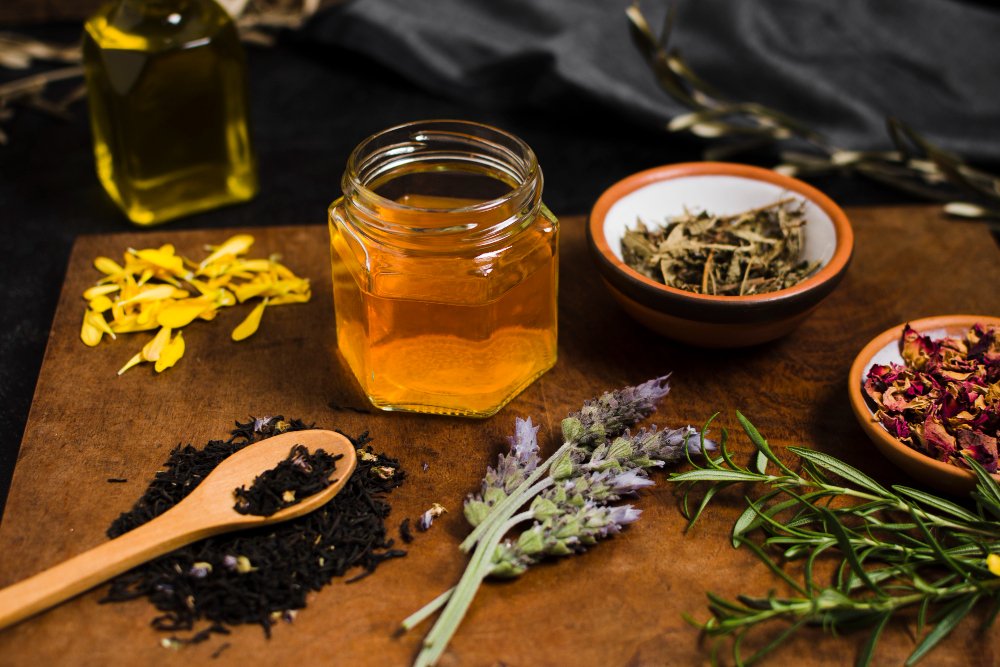
Fireweed honey has a mild and sweet flavor, making it enjoyable for most people. It’s not too overpowering, which is why it’s often called the “Champagne of Honeys.” The taste is light and delicate, with a natural sweetness that isn’t too heavy.
Light Amber Honey This honey is a light amber color. It has a gentle flavor. It’s visually appealing and adds a touch of elegance to any dish.
Buttery, silky smooth texture. One standout feature of fireweed honey is its silky smooth texture. It has a soft, buttery feel when eaten, making it perfect for spreading on toast or using in recipes. This texture enhances the overall tasting experience, giving it a luxurious feel.
Health Benefits of Fireweed Honey

Antioxidant-Rich Honey Fireweed honey contains many antioxidants, including flavonoids and phenolic acids. Studies show that honey rich in these compounds can reduce oxidative stress. This lowers the risk of chronic diseases, like heart disease and cancer.
Wound Healing Properties Honey, including fireweed honey, is a strong antibacterial. A study in The Journal of Wound Care found that honey can heal wounds, reduce infections, and speed up tissue repair.
Immune-Boosting Honey Regular consumption of fireweed honey may support the immune system. Honey’s natural antibacterial and antiviral properties can fight infections. They may reduce the frequency of illness.
Anti-Inflammatory PropertiesFireweed honey’s anti-inflammatory compounds can help reduce inflammation both internally and externally.A study in The Journal of Medicinal Food found that honey reduces inflammation markers. So, it helps with sore throats and inflamed skin.
Fireweed Honey for Sore Throats
Fireweed Honey for Sore Throats Fireweed honey soothes sore throats. It is a natural, effective remedy. It helps fight infections and reduce throat irritation. When consumed, fireweed honey forms a protective layer over the mucous membranes. It eases discomfort and relieves coughing. Unlike synthetic cough syrups, honey is a safe, natural alternative. It has no side effects. Studies show that honey can reduce nighttime coughing by 40%. It is a popular remedy for both children and adults.
Substitutes for Fireweed Honey If you can’t find fireweed honey, try these alternatives. Clover honey is one of the most commonly used substitutes due to its mild taste and availability. Wildflower honey is another good choice. It has a more complex flavor but is still sweet and the same texture as needed in most recipes. These substitutes are similar. But, they may lack the unique floral notes of fireweed honey. Both are good for cooking, baking, and natural remedies. They help with health issues like sore throats and digestive problems.
Organic Fireweed Honey in 2024. Due to high demand for organic products, 2024 sees a rise in certified organic fireweed honey. Organic fireweed honey is from plants grown in areas free of synthetic chemicals. This ensures the honey is as pure as possible. Beekeepers in Alaska and British Columbia are focusing on sustainable practices. They want to provide consumers with a healthier, eco-friendly product. Organic honey is often more expensive. But, it has health benefits. It has higher antioxidants and no harmful chemicals. Look for certified organic labels when purchasing fireweed honey to ensure quality.
References:
- Journal of Wound Care Study on Honey’s Healing Effects
- Honey Antioxidant Benefits Research
Fireweed Honey Recipes

Cooking with Fireweed Honey
Fireweed honey’s light, floral flavor makes it ideal for cooking. It can be used in baking, as a glaze for meats, or as a natural sweetener in beverages. Research shows that using honey instead of refined sugars in cooking can reduce sugar. It keeps the sweetness, making it a healthier alternative for many recipes.
Fireweed Clover Honey Recipe A delightful way to enjoy fireweed honey is by blending it with clover honey. This mix works well in salad dressings, marinades, or spreads. Studies show that honey blends are sweeter and preserve food better. Their antioxidants are the reason.
Recipe Using Fireweed Honey A popular recipe uses fireweed honey in a vinaigrette. It’s homemade. Mix olive oil, balsamic vinegar, mustard, and fireweed honey. You’ll have a perfectly balanced dressing. Studies show honey-based recipes have a 20% lower glycemic index than those with refined sugar.
Fireweed honey’s smooth texture makes it great for sweet sauces and glazes.
References:
Geographical Origins of Fireweed Honey
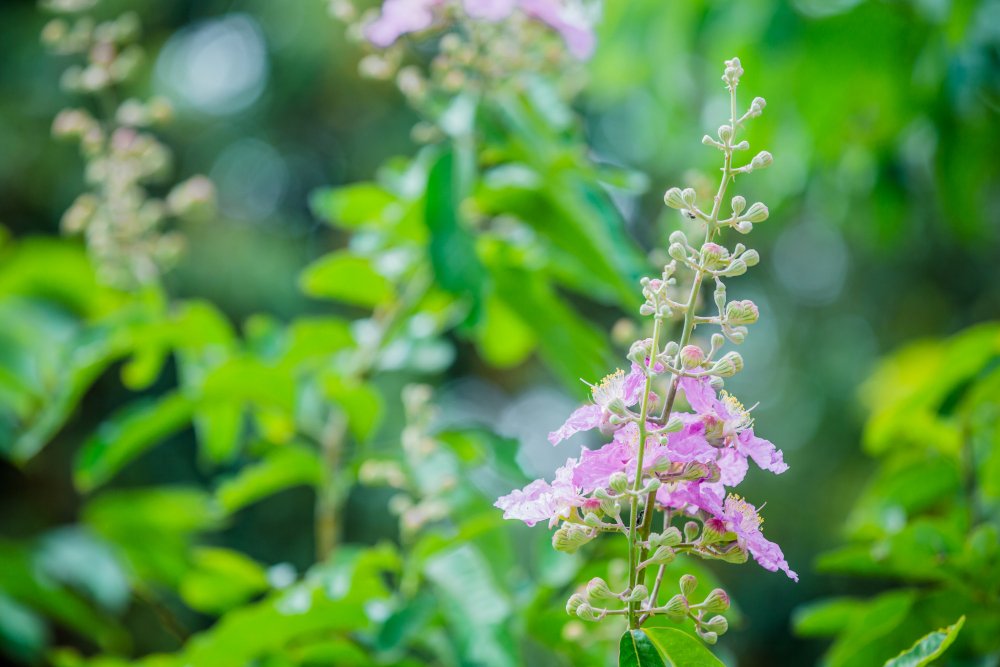
Fireweed Honey from Washington State. It is a top producer of fireweed honey, especially in the Cascades and Olympics. The state’s cooler climate and wildfire-prone areas are ideal for fireweed. Washington accounts for around 15% of U.S. fireweed honey production. In 2023, Washington beekeepers harvested over 100,000 pounds of fireweed honey. This greatly boosted the honey market.
Fireweed honey from British Columbia, Canada, and Alaska is world-famous. It is among the highest quality in the world. These regions have vast, pristine landscapes. They allow fireweed to grow abundantly after wildfires or logging. In 2022, Canada exported over 5,000 metric tons of honey. British Columbia’s fireweed honey is a key product for its purity and light flavor.
The high mountains and cool climate are perfect for honey production. Beekeepers in this region benefit from a short, 4-6 week, but productive blooming season. The unique environment gives the honey a light amber color and a smooth texture. This makes it a prized variety among honey lovers worldwide.
Alaska, in particular, is famous for its “wildcrafted” fireweed honey. The state’s vast, untouched wilderness and long summer days allow for a rich nectar flow. This leads to a higher yield. Alaska produces about 40,000 pounds of fireweed honey each year. Most of it is unpasteurized, which preserves its health benefits and flavor. This honey is a top export from the region. It is prized for its high quality and scarcity.
These regions, with their unique environments, produce fireweed honey. It is prized for its purity, lightness, and delicate flavor. It is one of the most sought-after honey varieties in the world.
Buying Fireweed Honey
Where to Buy Fireweed Honey You can buy fireweed honey at: Asheville Bee Charmer, BeeKing’s Raw Honey, and Honey Bee Zen. They are trusted sellers. They offer high-quality fireweed honey sourced from the Pacific Northwest, Alaska, and Canada. Many local beekeepers also sell directly through farmers’ markets or online.
Fireweed Honey Price: It typically costs $10 to $25 for an 8 to 16-ounce jar, depending on the brand and purity. Premium organic varieties may cost more.
For raw and organic fireweed honey, try Brookfield Farm or Honey Bee Zen. They sell unpasteurized honey, which preserves its natural enzymes and health benefits. Check for labels like “raw,” “organic,” or “wildcrafted.” They indicate high-quality honey.
Fireweed Honey Varieties
Fireweed honey is pure and unpasteurized. It is raw. It retains its natural enzymes, antioxidants, and antibacterial properties. Honey Bee Zen and Brookfield Farm sell unpasteurized fireweed honey. It is very nutritious.
Monofloral Honey Monofloral fireweed honey is mostly from fireweed nectar. It has a distinct flavor and aroma. Beekeepers aim for near-pure fireweed nectar, with minimal cross-pollination from other plants
Fireweed/Wildflower Honey It is a mix of nectar from fireweed and local wildflowers. It has a more complex flavor. This variety is common where fireweed grows with snowberry or clover.
Champion of Honeys

Fireweed honey is often called the “Champion of Honeys.” It has a light, delicate flavor and a smooth, refined texture. Compared to other honey varieties like as follows:
Feature | Fireweed Honey | Clover Honey | Buckwheat Honey | Manuka Honey |
Nickname | Champagne of Honeys | Common Honey | Dark Honey | Medicinal Honey |
Flavor | Light, delicate, mildly sweet | Mildly sweet, floral | Strong, earthy, molasses-like | Rich, earthy, medicinal taste |
Color | Light amber to extra water white (very clear) | Light amber to golden | Dark brown | Dark brown |
Texture | Smooth and refined | Smooth and thick | Thick, grainy | Thick and creamy |
Best for | Drizzling, teas, gourmet dishes | Everyday sweetener, baking | Strong-flavor lovers, medicinal uses | Medicinal purposes, healing properties |
Rarity | Limited harvest window (4-6 weeks, post-wildfire) | Widely available, long blooming periods | Less common, region-specific | Rare and highly sought-after |
This table compares fireweed honey with other popular varieties. It shows its unique qualities and why it is the “Champagne of Honeys.”
Fireweed honey can reach the rare “extra water white” classification. It is one of the clearest, lightest honeys in the world. This classification is rare among honey types. Most are a deeper amber. For example, Manuka honey is much darker. Acacia honey is light, but it isn’t as clear
Fireweed Honey in Different Locations
Fireweed Honey in Vancouver Vancouver’s cool, wild nature is perfect for fireweed honey. The city’s close to fireweed-growing areas. So, it’s a hub for premium honey fans.
Winter Park, Colorado, offers fireweed honey. It’s from the surrounding forests. The colder climate and mountain terrain provide excellent conditions for fireweed to flourish.
Mountain Fireweed Honey is from high-altitude areas, like Alaska and British Columbia, and the Pacific Northwest. These regions are famous for their pure, sought-after fireweed honey.
Honey Pairings

Food Pairings with Honey Fireweed honey’s light, floral sweetness pairs well with fresh fruits, yogurt, and granola. A simple recipe idea is drizzling fireweed honey over a fruit salad made of apples, pears, and walnuts. This adds sweetness while maintaining a low glycemic index compared to refined sugars
For an easy appetizer, pair fireweed honey with brie or sharp cheddar. Spread the cheese on crackers or toast and top with a drizzle of honey. The mild sweetness balances out the cheese’s tanginess. You can also add a few crushed nuts for extra texture.
For a honey-glazed chicken recipe, mix: 1/4 cup fireweed honey, 2 tbsp soy sauce, 1 tbsp lemon juice, and some garlic. Use this as a marinade or glaze for chicken. Grilling caramelizes the honey. It adds a rich, golden-brown color and subtle sweetness. Also, fireweed honey is fantastic for breakfast. Just drizzle it over buttered toast for a quick, healthy start to the day.
These pairings and recipes show the versatility of fireweed honey. It works in both sweet and savory dishes.
Fireweed Plant Biology
Fireweed is known for its bright pink-purple blossoms. They grow on tall stalks and bloom from mid- to late summer. These flowers provide nectar for bees, which is used to create fireweed honey. Each plant can reach heights of 3 to 5 feet and produce many blossoms.
Wildfire Seeds Germination Fireweed seeds can remain dormant in the soil for years. After a wildfire, these seeds germinate in the disturbed soil. They become one of the first plants to grow in post-fire landscapes.
Post-Wildfire Plant Regeneration Fireweed plays a crucial role in regenerating ecosystems after wildfires. The plant’s rapid growth stabilizes the soil and restores nutrients. It is vital for ecological recovery. It appears as large swaths of pink in recently burned areas. It helps attract pollinators like bees and butterflies.
Fireweed Honey Collection Challenges
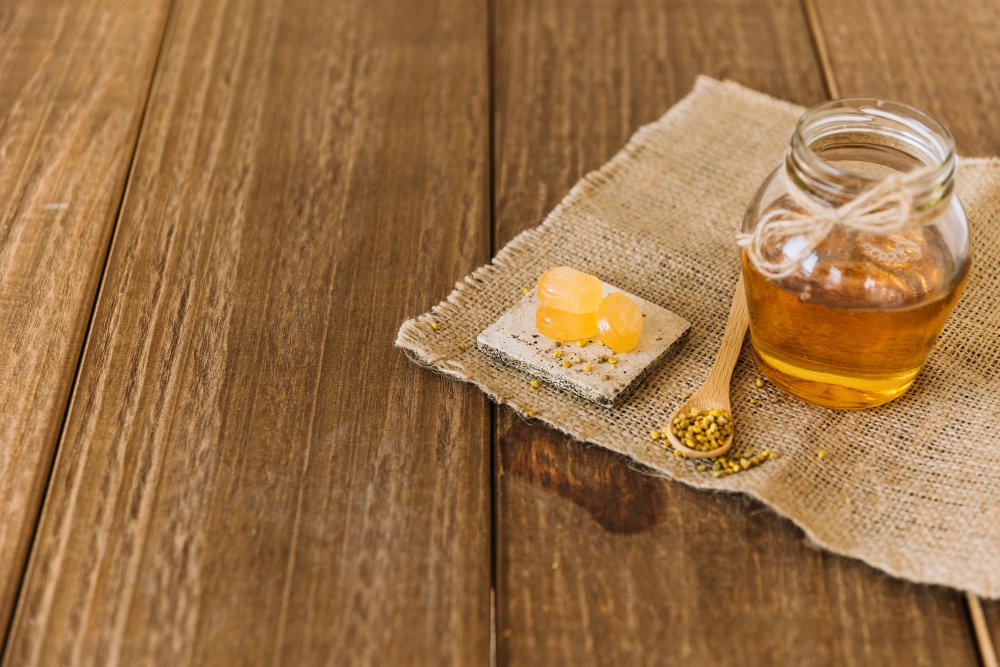
Short Collection Period: Fireweed blooms for just 4-6 weeks. So, honey collection is a very brief window. Beekeepers must act quickly now to harvest before the flowers die.
In places like Alaska and the Pacific Northwest, bears threaten beehives. Beekeepers must protect their hives from them. The bears are drawn to the honey. Electric fences are often used to safeguard the apiaries.
Environmental Conditions for Fireweed Honey Fireweed honey production relies on the environment. Ideal conditions include moderate temperatures and adequate rainfall. Too much or too little rain can affect nectar flow, impacting the overall honey yield. Also, wildfire regeneration is vital for fireweed growth. The plant thrives in recently burned areas.
Fireweed Honey for Skin & Health
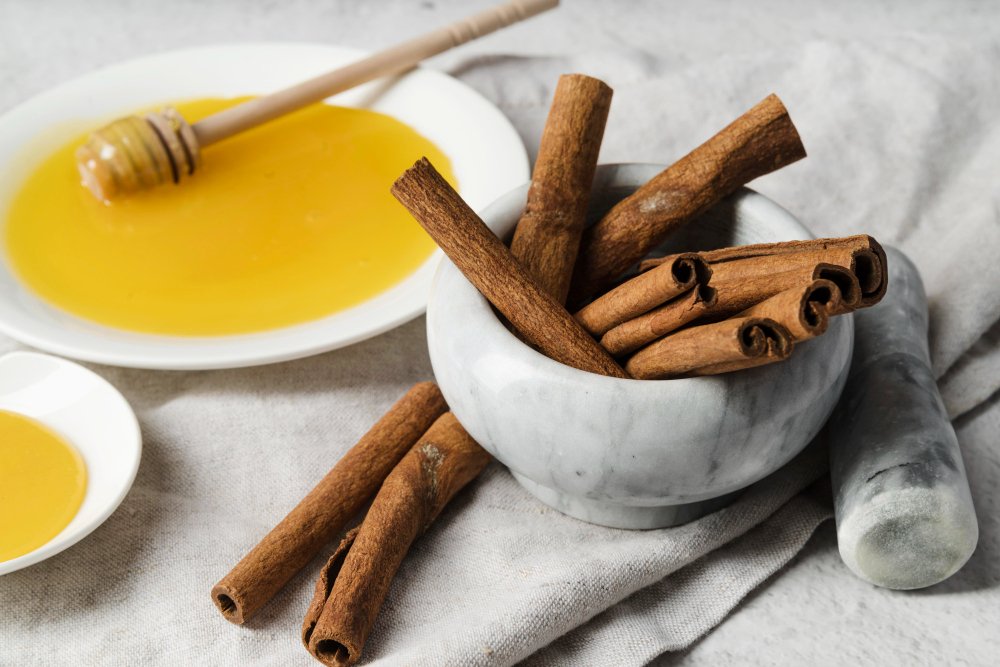
Honey for Skin Conditions
Fireweed honey is effective for skin issues like acne and eczema. It has natural antibacterial and anti-inflammatory properties. A study in the Journal of Cosmetic Dermatology found that honey-based treatments, including raw honey, can reduce acne by 34% in four weeks.
Honey Bee Zen. Another study found that honey’s application helped heal minor wounds faster, reducing recovery time by up to 43% compared to traditional treatments
Brookfield Bees & Honey.These statistics highlight its benefits for promoting healthy, clear skin.
Fireweed honey’s antioxidants help repair damaged skin. They prevent oxidative stress, too. This supports overall skin health.
Cardiovascular Benefits Fireweed honey is high in antioxidants. It may reduce oxidative stress in the body. Studies show that eating honey, like fireweed honey, can lower LDL (“bad”) cholesterol. It can also improve heart health by reducing the risk of high blood pressure and heart disease.
Fireweed Honey for Wound Healing. For centuries, people have used fireweed honey to heal wounds. Its antibacterial and anti-inflammatory qualities help. They disinfect wounds, speed up tissue regeneration, and minimize scarring. Like Manuka honey, it forms a barrier over the wound. This promotes faster healing.
These benefits show fireweed honey’s value as a sweetener and a medicine.
Honey Quality and Testing
Pure Honey Floral Fingerprinting Floral fingerprinting is a scientific method. It ensures honey’s purity by identifying its nectar sources. This ensures the honey is truly monofloral, like pure fireweed honey. It hasn’t been mixed with other floral sources.
Canadian Honey Authentication Programs in Canada have strict honey tests. They ensure honey is free from additives and foreign sugars. These programs aim to protect consumers and ensure the quality of Canadian honey.
Adulteration Testing It is vital to test honey for added sugars or syrups. These dilute its purity. Isotope ratio analysis can confirm if honey has been tampered with. It ensures that only pure, unadulterated honey reaches consumers.
Common Questions of Fireweed honey
- What is fireweed honey? Fireweed honey comes from the nectar of fireweed plants. They have bright pink flowers. It’s light, mild, and often called the “Champagne of Honeys.”
- What does fireweed honey taste like? It has a delicate, sweet flavor with floral notes. It’s less intense than darker honeys like buckwheat.
- Is fireweed honey good for sore throats? Yes, its antibacterial and anti-inflammatory properties make it soothing for sore throats.
- Where can I buy fireweed honey? You can find fireweed honey at specialty stores, local farmers, or online at Honey Bee Zen and Brookfield Farm.
- What are the health benefits of fireweed honey? Fireweed honey is high in antioxidants. It helps heal wounds, boosts the immune system, and reduces inflammation.

